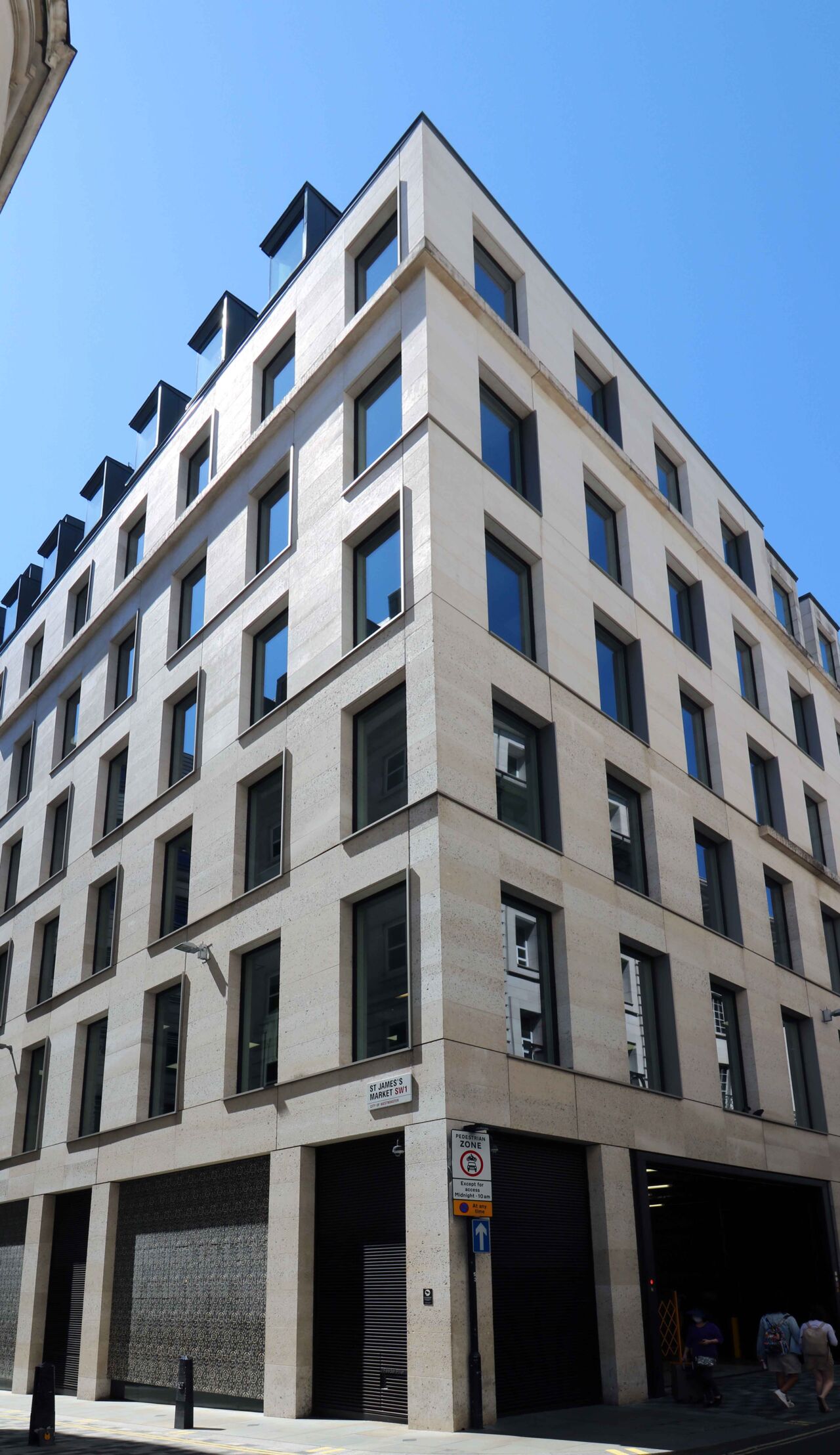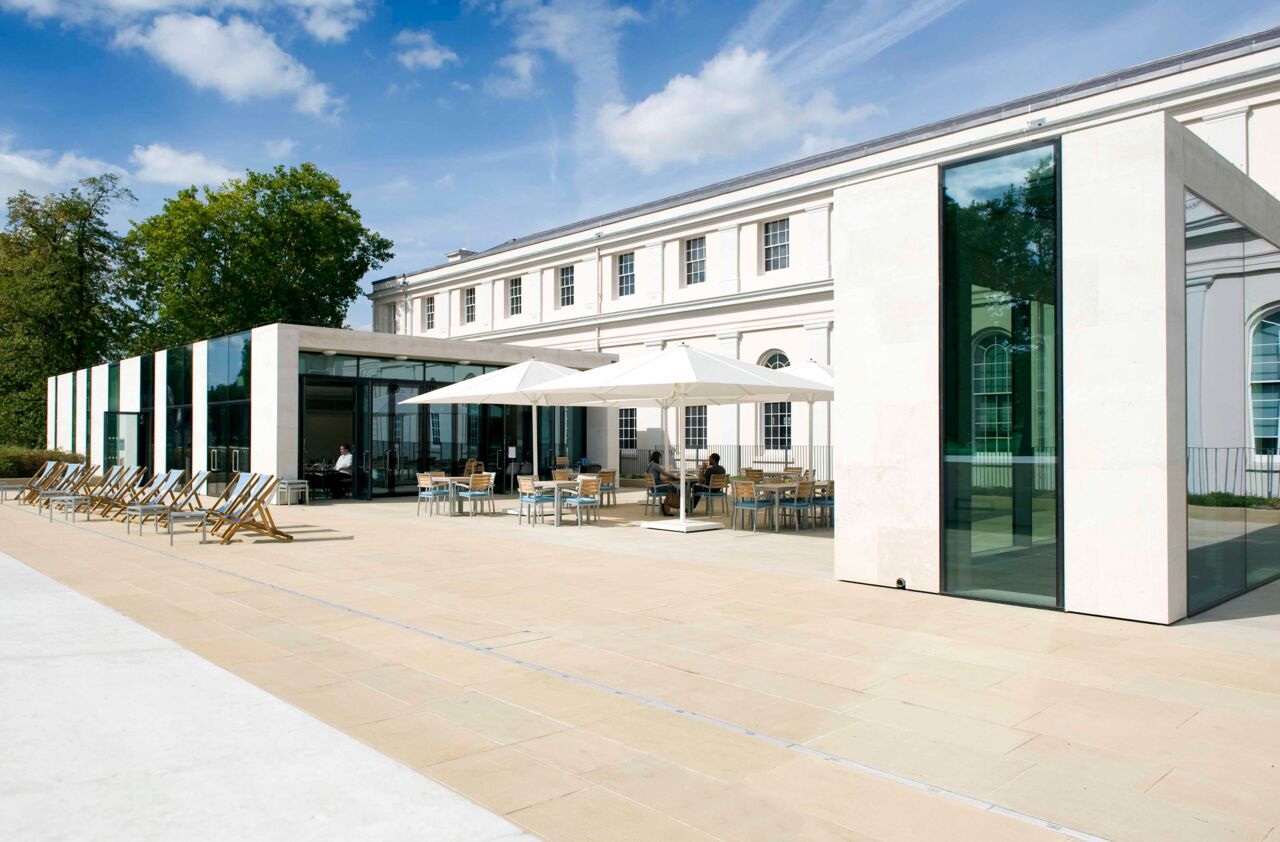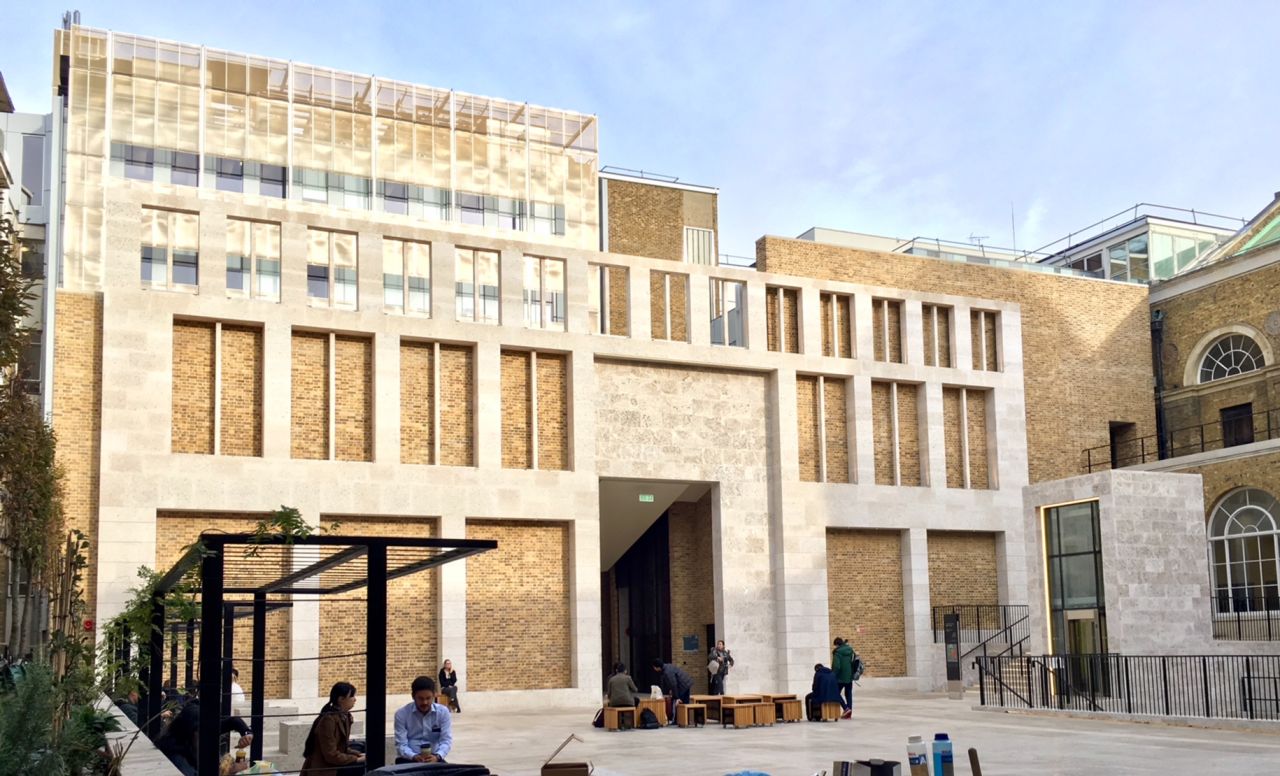Strong from the Ground Up: Portland Stone at Plinth Level
For generations, Portland Stone has been used right down to ground level, forming the plinth courses of some of the UK’s most iconic buildings. It’s a proven material that still performs beautifully today when brought all the way down to the pavement.
As with any natural stone at ground level, the key is in the detailing. Portland Stone is perfectly capable of handling the exposure, but issues such as staining or faster weathering can occur if water is allowed to sit at the base of the building. Contaminated water – for example with de-icing salts or iron from nearby soils – can be the culprit. The solution is simple: ensure paving falls away from the façade, manage any water behind the cladding, and, if needed, include a DPC to stop water being drawn up into the stone.
Many designers also choose to use a shellier bed of Portland Stone at plinth level. While all Portland Stone has the same classic creamy-white base colour, something like Grove Whitbed works particularly well here. Its shell content naturally hides the little scuffs and marks that happen at street level. The shells blend with these everyday marks, keeping the plinth looking smart with minimal fuss.
Some Projects Showcasing Portland Stone at Plinth Level
Albion Stone projects across the UK demonstrate just how well Portland Stone performs at ground level:
- St James’s Market, London – Grove Whitbed was selected for the plinths, combining durability with a textured finish that stands up to everyday contact at street level.
- Wilkins Terrace, UCL – Portland Stone was used extensively for paving, steps, seating and walling, all taken confidently down to ground level in this public courtyard.
- National Maritime Museum – Fancy Beach Whitbed provided robust paving and plinth detailing in high-traffic public areas, with Bowers Roach used for complementary features.
- St Paul’s Cathedral, London – Jordans Whitbed was chosen for the Equal Access ramps, the historic façade of Heritage Portland Stone is still performing excellently at pavement level.
These projects show that Portland Stone not only looks striking at plinth level but also weathers gracefully, even in high-traffic public spaces. They offer clear evidence of Portland Stone’s lasting performance when detailed with care.

St James's Market

St Paul's Cathedral


National Maritime Museum
Wilkinson Terrace
Albion Stone, a fourth generation family business pride ourselves on having a helpful and skilled workforce as well as modern and traditional manufacturing process to enable us to produce the highest quality Portland Stone with minimal environmental impact.


